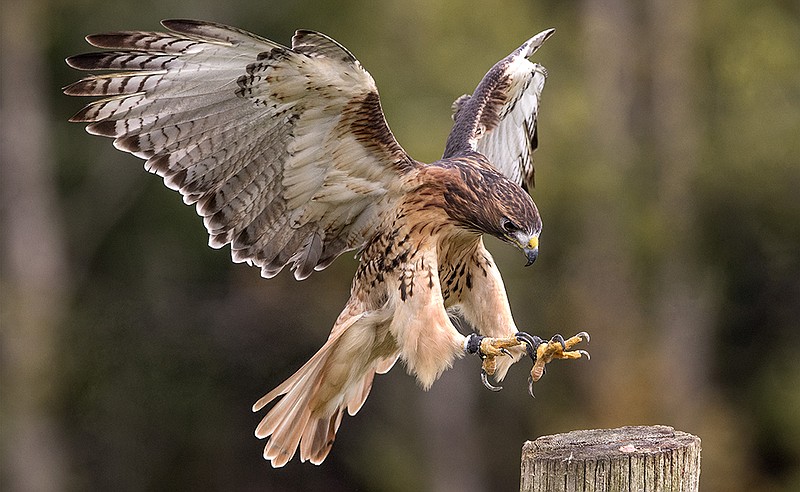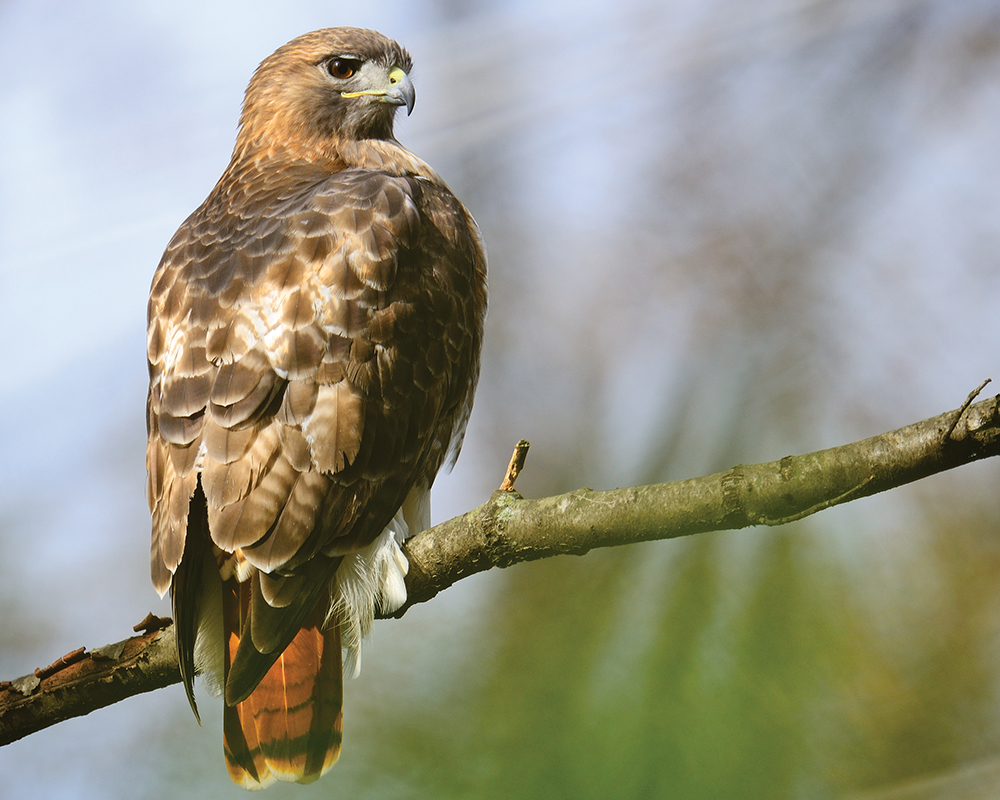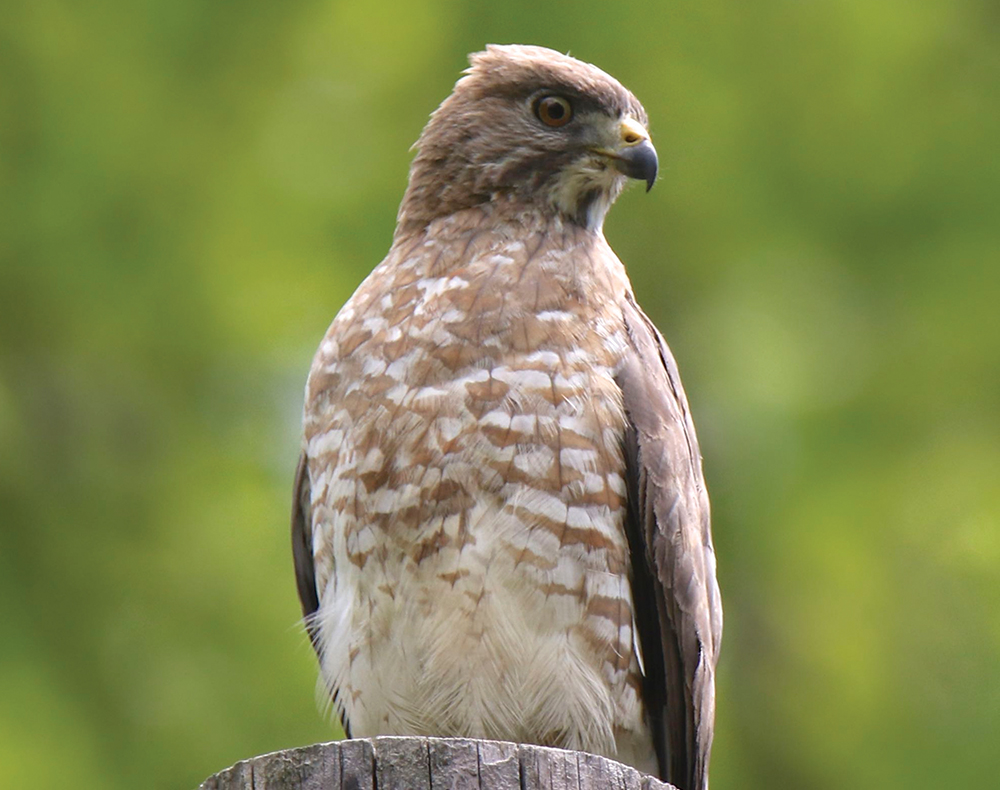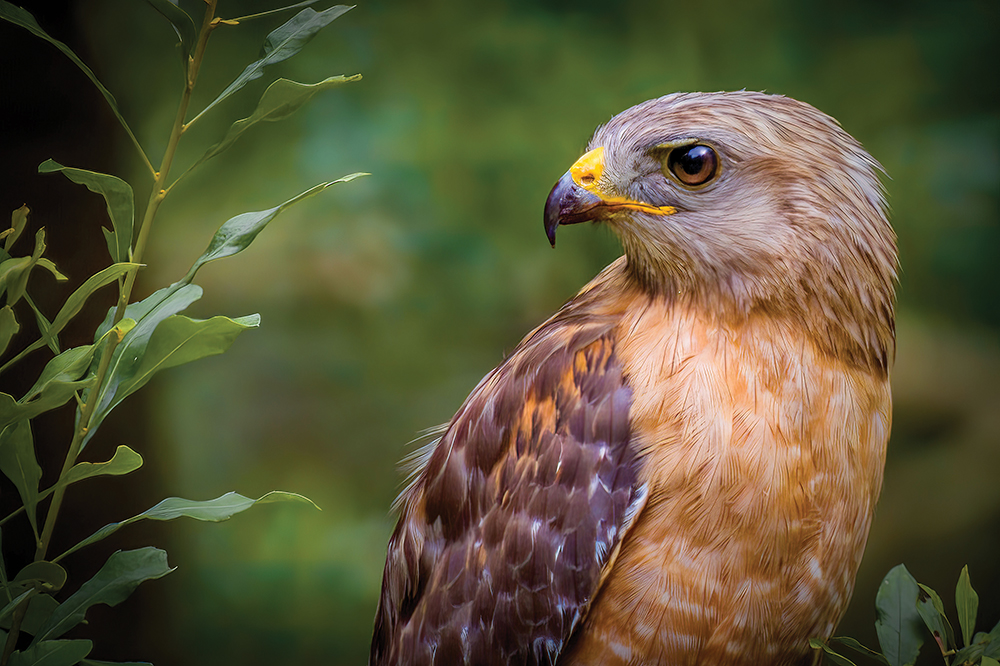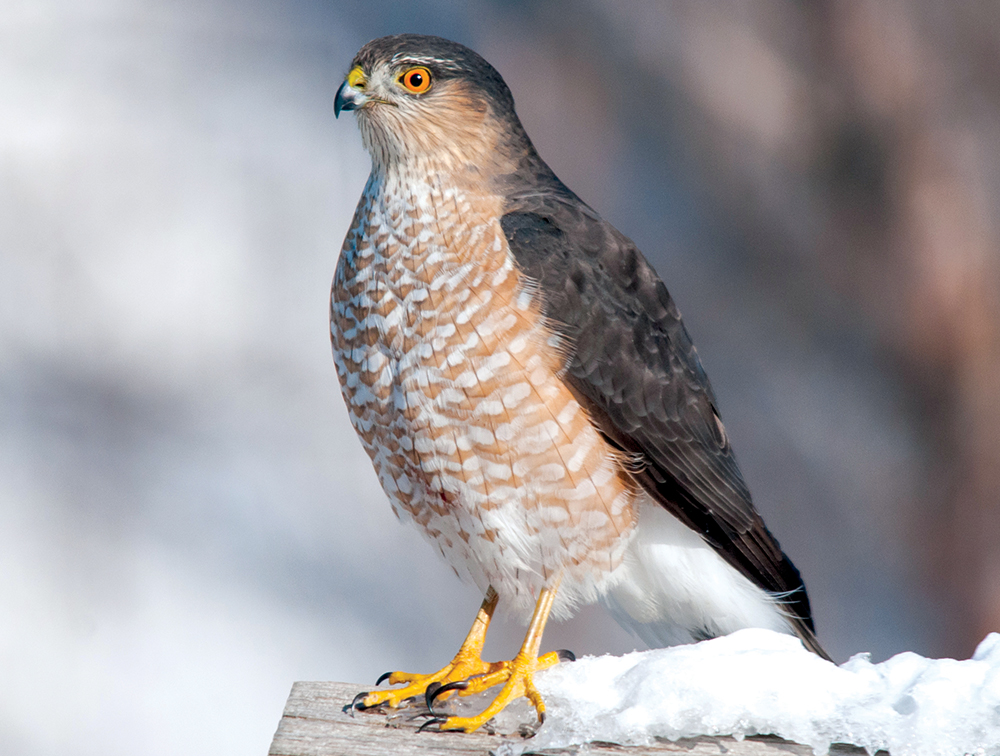Bill Haley knows his hawks. Each fall, for the past 29 years, he makes daily trips to the Soddy Mountain Hawk Watch observatory to count birds.
"You bring a chair, you sit and wait. It's kind of like fishing," says Haley, who retired as Tennessee Aquarium's education outreach coordinator in 2020.
Over the years, Haley has recorded more than 100,000 hawks passing through the observatory -- 3,000 alone last year. He submits his data to the Hawk Migration Association of North America, which uses the information to study migration patterns.
Naturally, Haley has developed a keen eye for distinguishing between species. Hawk identification can be tricky, after all. Here, he offers a few quick tips to help you learn the five hawk species that frequent East Tennessee.
(The following ID tips focus on adult hawks. Juvenile hawks have less distinguishing features and can be even trickier to identify.)
In backyards
A hawk in your backyard is likely one of two: a Cooper's or a sharp-shinned hawk, says Haley.
"They're the ones hanging around your feeders trying to eat your birds," he says.
Cooper's and sharp-shinned hawks are accipiters, a genus of hawk characterized by relatively short, rounded wings and long tails, according to "The Sibley Guide to Birds."
As adults, both species are similarly colored with metal-gray backs and orange breasts.
However, sharp-shins, or "sharpies" as they're often called by birders, are the smallest accipter, ranging from blue jay-sized to pigeon-sized. The Cooper's is larger, about the size of a crow, Haley says.
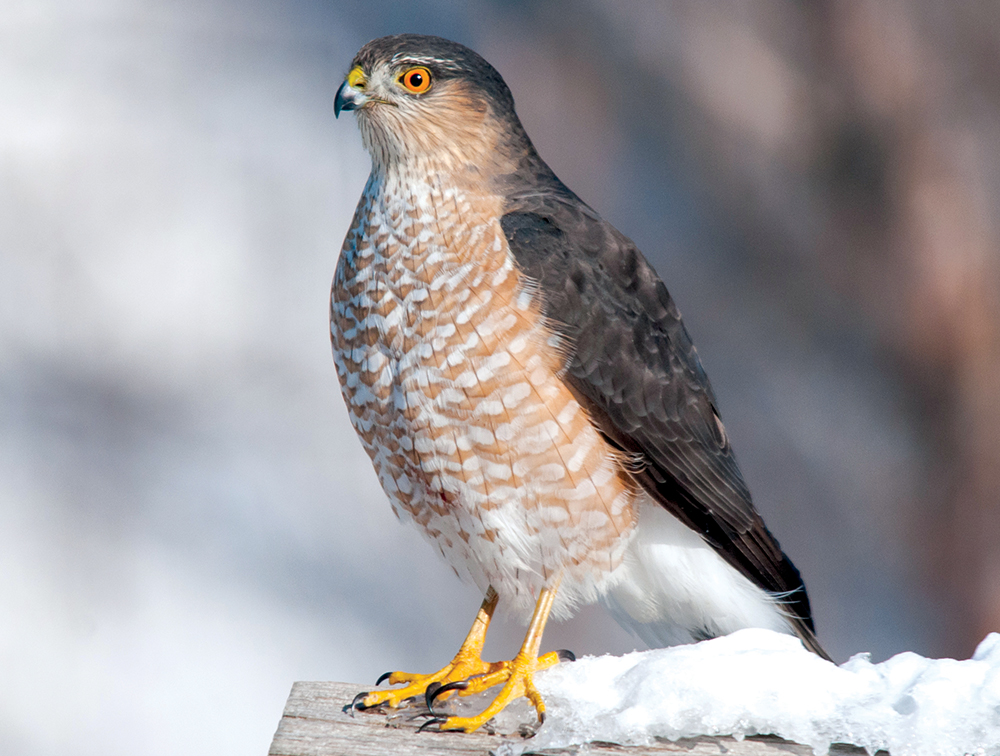 Getty Images / Sharp-Shinned Hawk
Getty Images / Sharp-Shinned Hawk
On roadsides
The red-tailed hawk is "the most familiar, most abundant of buteos," says Haley.
The buteo genus includes larger-sized hawks with long, rounded wings and short tails. Regionally, they include the red-tailed, red-shouldered and broad-winged hawks, often hunting from perches – trees or posts – to drop onto ground-dwelling prey.
Red-tails are the largest, and adults can be identified by their distinctive red-orange tails. Or, look for a belly-band, a strip of dark feathers across their whitish breasts, says Haley. "Some belly-bands are faint, and some are very distinguished," he says. But the markings can be found on both adults and juveniles.
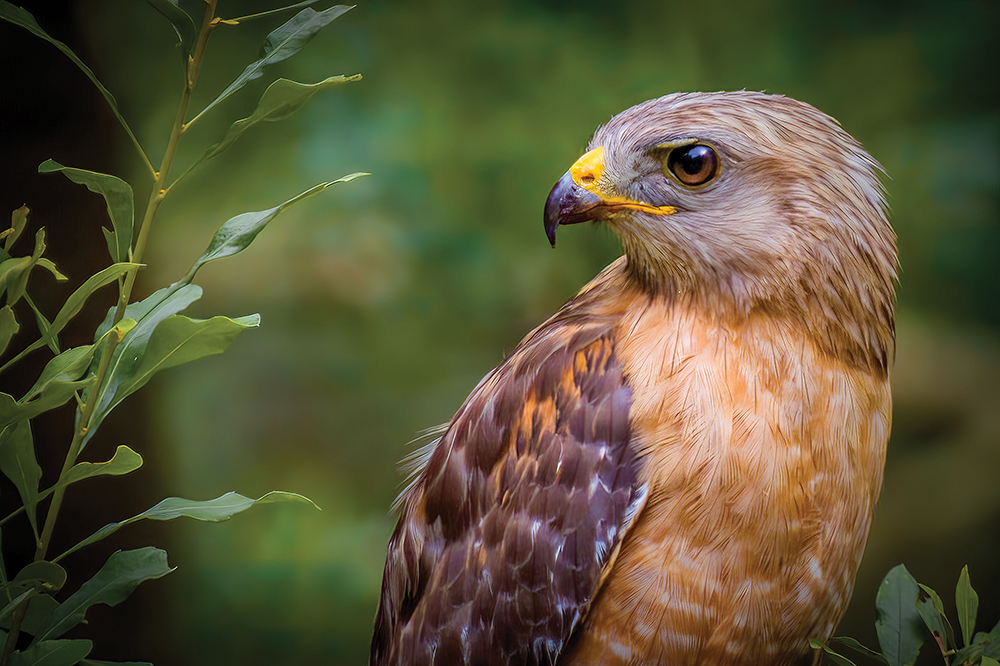 Getty Images / Red-Shouldered Hawk
Getty Images / Red-Shouldered Hawk
Near woodlands
While red-tails prefer open landscapes, red-shoulders are more common near wooded areas. It is a medium-sized hawk with a ginger-orange breast and black-and-white banded tail, with the white bands being very thin -- a feature that is unique to the species, says Haley.
All of the species previously mentioned are yearround residents of East Tennessee.
The broad-winged hawk, however -- also found near wooded areas -- spends its winters in Central America, returning to East Tennessee each spring.
"The first ones arrive on April 6," says Haley, partly joking, though after years of monitoring their spring migration numbers, the broad-wing always returns right around that date, he says.
They have whiter breasts and underwings than other species, with black-and-white banded tails, though "the white bands are bolder, not thin like the red-shoulder," he says.
When at the observatory, Haley has learned to identify species by their shapes in the sky and the way that they fly. That level of expertise just comes with time, says Haley -- lots and lots of time. In his 29 years, Haley has spent more than 8,000 hours hawk-watching on Soddy Mountain.
